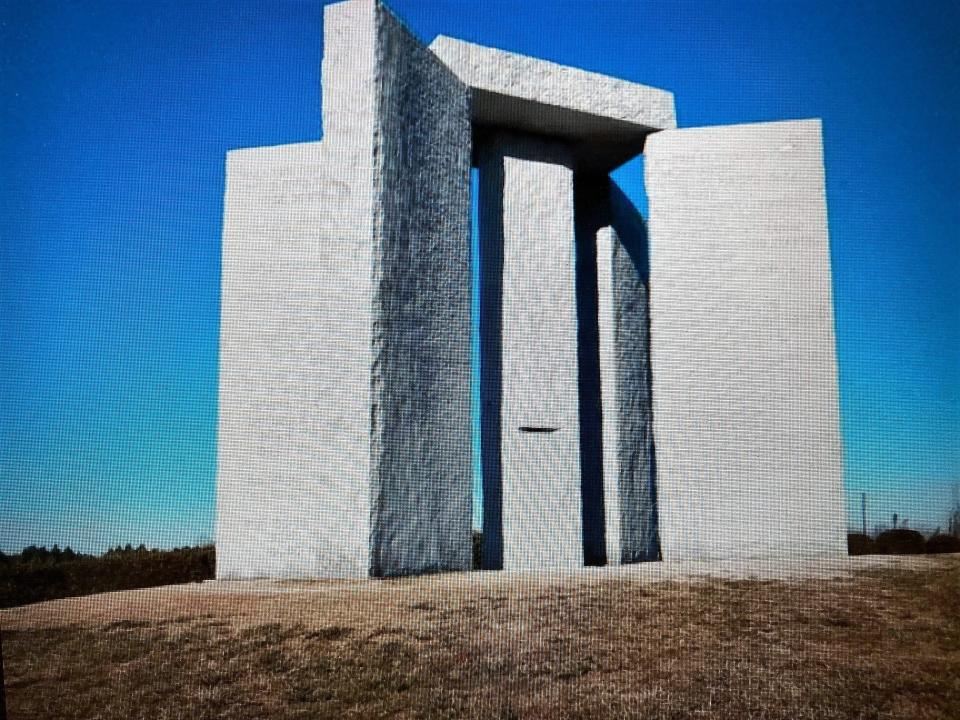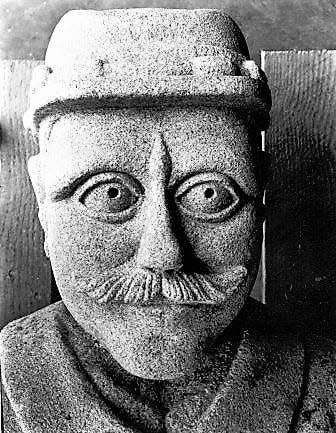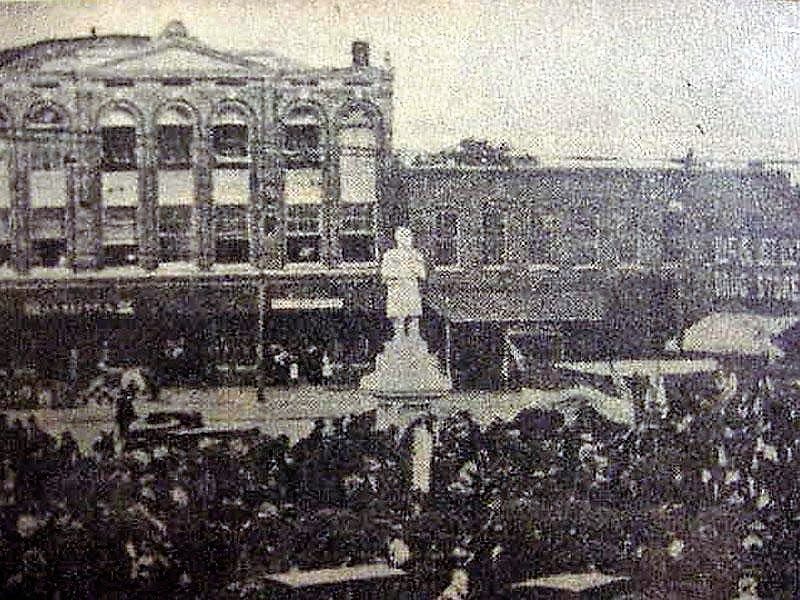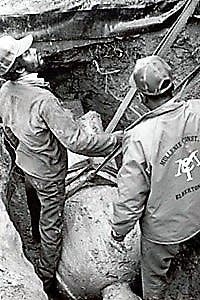Monday Mystery: What's Elberton's problem with public monuments? Guidestones weren't first
This month's destruction of Elberton's Georgia Guidestones – what some called "America's Stonehenge" – was not the first time an Elbert County granite monument met a mysterious end.
The Guidestones were seriously damaged by an overnight explosion July 6. They had been an Elbert County tourist attraction since 1980 when an anonymous donor had them engraved and placed on a farmland hill outside of town.

On the 19-foot-tall stones had been carved advice to future generations in several languages. But in recent months, an unsuccessful gubernatorial candidate had called them "Satanic" and advocated their destruction.
In recent news: Georgia Guidestones site in Elbert County demolished after bombing damaged the monument
Monday Mystery: What was behind the creation of the Georgia Guidestones?
Finding fault with the monument
Elbert County has seen problems with granite monuments before.
In 1900, another granite edifice, this one in downtown Elberton, met an equally curious overnight demise. It involved a statue known as "Dutchy," and it's a story as odd as the name.

Around the turn of the previous century, Elbert had joined numerous communities across the South to memorialize local combatants from the War Between the States.
Because of Elbert's growing granite industry, that became the stone of choice for its memorial. A sculptor named Arthur Beter won the job. Little is known about Beter and there are suggestions he was a European immigrant.
He got to work chiseling and on a midsummer day in July 1898, photos show what looks like much of Elberton turning out for the big unveiling. Women wore their best dresses. Young girls dressed in white. Everybody was excited.
That turnout turned ugly pretty fast.
When the cloth draping the statue was pulled away, bystanders gasped.
Before them on a pedestal stood an overweight, bugged-eyed granite goliath, a cross between Porky the Pig and Elmer Fudd with a mustache.

In the months that followed some tried to bring humor to the artistic disaster. The figure was soon called "Dutchy" because many said it looked like a Pennsylvania Dutchman (or at least what people in Elbert County thought a Dutchman looked like.) Others, according to the Elberton Star, were less kind and suggested something resembling a hippopotamus.
There were other faults to find. The uniform, many pointed out, looked more like a Yankee outfit. He also appeared to be wearing what looked like a winter overcoat, something rarely seen in Georgia.
Proud Elbertonians bore this embarrassment for two years, then one night in August, 1900, an anonymous task force – said to have been fortified with alcohol – removed the civic eyesore and cultural embarrassment.

According to the Aug. 18, 1900, issue of the Elberton Star, "Dutchy, like all good Dutchmen, loved his beer and, when a keg was rolled up to the base of the monument by a friend, the climax was reached … The keg was tapped and the scent floated up to where Dutchy stood. He became frantic."
The tongue-in-cheek account goes on to report the statue eventually appeared to have lost its balance and fell, breaking off at the knees. Its remains were quickly collected and buried, and a new statue soon replaced it.
"No longer will he frighten animals and cause them to run away," the newspaper reported, "and no longer will the public have a chance to make fun of his manly bearing."
Actually, according to a story in The Augusta Chronicle in the 1980s, those responsible for the statute's removal were the ones who paid for its replacement.
After the Guidestones were displayed in 1980, some thought Dutchy should make a comeback. Dutchy did have historic significance, after all, as one of the first recorded statues carved from Elberton granite. His shattered parts were dug up in 1982, taken to a local car wash and cleaned, and are now displayed at the Elberton Granite Museum and Exhibit.
Bill Kirby has reported, photographed and commented on life in Augusta and Georgia for 45 years.
This article originally appeared on Augusta Chronicle: More than century before Guidestones fell, another monument went down

